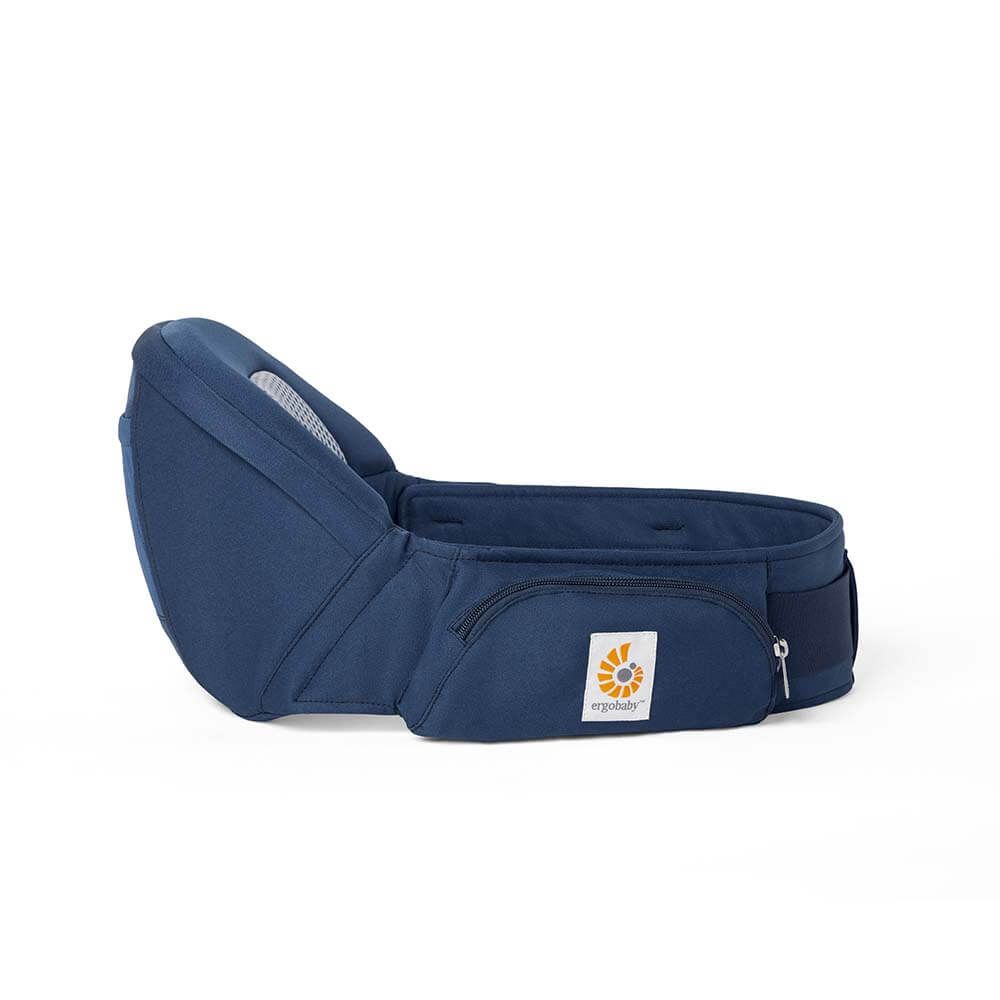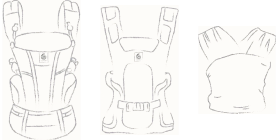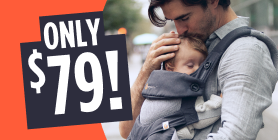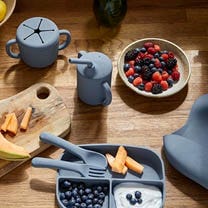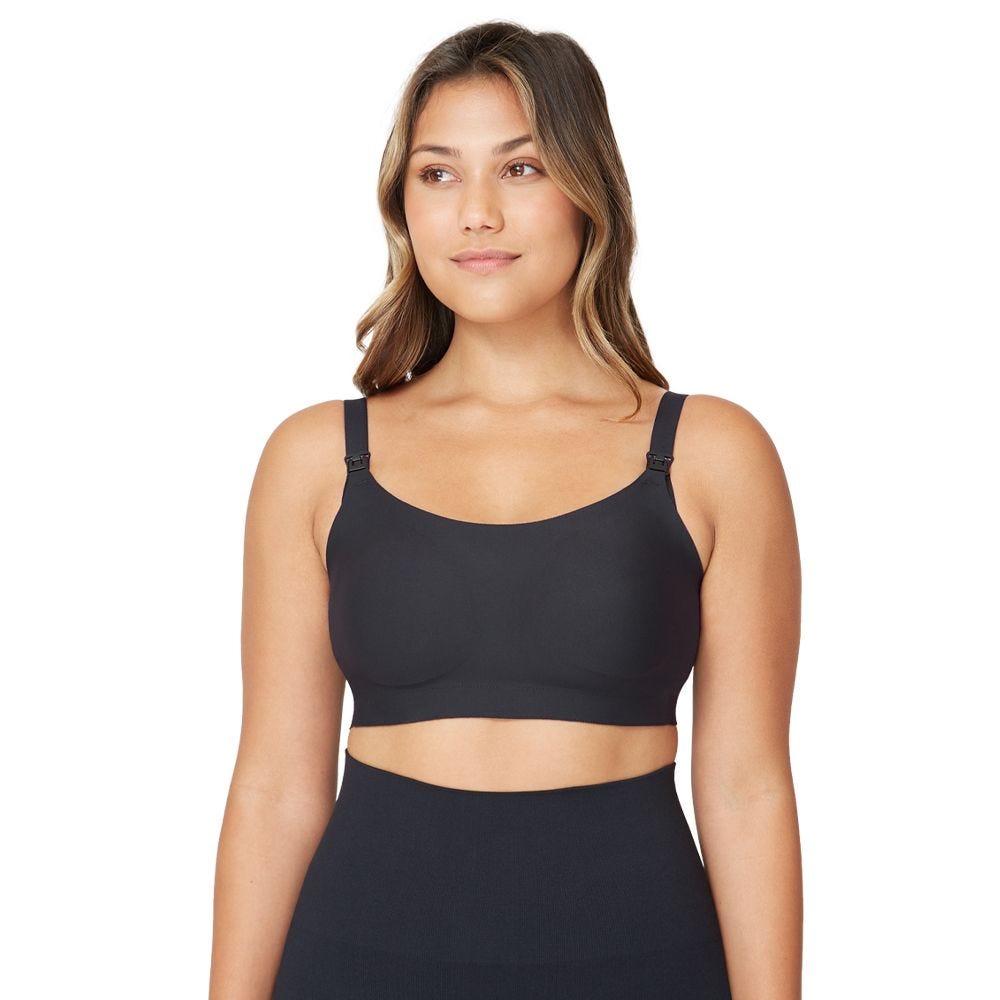Page 11 - Blog
November 14, 2018
Every mom you know has probably told you that you’ll regret not using a baby carrier (I’m one of those moms). However, there are so many wraps out there, that it can be confusing for moms and dads to figure out what type of baby wrap to use much less how to use it. And you’ve likely heard or seen terms online like carrier, ring sling and infant wrap. These terms, and baby gear in general, can be really confusing. In this post, we’ll go over why you’d want a baby wrap, how to tie a baby wrap and tips for tying and using a baby wrap.
Why Should You Use a Baby Wrap?
If you’re like me, you can’t seem to make any big, or slightly big, decisions without drafting up a Rory Gilmore-style pro-con list. Here’s yours for a baby wrap carrier.
Pros:
1. Wraps are an ideal tool for early postpartum days
Baby wraps are an excellent choice for mamas in the early days postpartum. While several of our carriers are newborn friendly (like the Omni 360) and can be used from birth on up, a baby wrap like the
October 18, 2018
Have you ever wondered about babywearing? It’s a great thing to try! There are so many wonderful benefits of babywearing. From supporting baby’s natural posture to reducing infant crying, strengthening the bond between baby and her caregivers and more, using a baby carrier is a win-win for you and your baby, emotionally, cognitively and physically.
But if you’ve never used a baby carrier, everything is new and unknown. So, you might be asking yourself things like what kind of ergonomic baby carrier should you use? When can you start using a baby carrier? Is a baby carrier safe for newborns? What about baby carrier safety and hip dysplasia?
Browse Baby Carriers
Here are the basic things you need to know about using a baby carrier.
1. You can start using a baby carrier from day one.
So, let’s start with the question: is a baby carrier safe for newborns? Yes, but it depends on a few factors. Some parents think they can’t use a baby carrier until their baby is six weeks old
August 30, 2018
When you’re looking for a baby carrier for your newborn, you want one that’s comfortable for you and your baby; one that evenly distributes your baby’s weight and doesn’t put unnecessary pressure on your back and shoulders. But even more importantly, you want an ergonomic baby carrier because it properly and safely supports your little one.
What is an ergonomic baby carrier?
An ergonomic baby carrier supports the natural posture of babies, while encouraging healthy hip development. It should support your baby’s legs up to the backs of his knees, so his entire legs don’t dangle, but he can still freely move his lower legs as he gets a little older. An ergonomic carrier comes with a wide, comfortable base that supports your baby’s weight so more of it is on her bottom rather than her crotch and holds your baby’s hips and legs in a frog leg or M shape. In this ergonomic position, your baby’s bottom is lower than her knees, while her knees and hips are level with one another and her hips are
August 22, 2018
This week we crank up the cardio using some tried and tested training protocols to raise the heart rate with low impact, high energy multi muscle movements. Watch your form, keep the movements smooth and controlled and focus on your posture and core activation throughout. You can adapt this workout to suit your fitness by using either just your body weight or adding in some small hand weights to turbo charge this session! You are aiming here for 10 back to back reps of each move...30 in total before resting for 1 minute and you are aiming to repeat the circuit 4 times.
Side squat and bicep curl
Alternating lunge and press
Squat, curl and press
If you aren’t sure what stage of your recovery you are at, download our weekly workout guide here. For more parent and baby workouts and other family health and wellness, click here. _________________________
Please use caution when attempting any of the carries, exercise or activities highlighted on this blog, social media or any other
August 10, 2018
When my daughter was seven months old, my husband and I took her across the country on a red-eye, followed by two weeks of road tripping and camping. We purposefully booked a night flight, thinking she’d sleep through the whole thing and we’d arrive at our destination ready to hit the road. Instead, she stayed awake the entire time, refused to fall asleep once we landed, and left us with literal red eyes and terrified of what lay ahead of us. It ended up being an incredible trip, but we’ve learned a thing or two since then, and it has made our subsequent trips much smoother. Here’s what has helped us travel with a baby in the past:Let Go of Expectations
Try to stick to any home routines wherever possible, such as bedtimes or mealtimes. Other than that, just go with the flow.
Adjust Ahead of Time
If you’re going somewhere with a significant time difference, begin adjusting a few weeks ahead of time by staying up an hour or two later, or rising an hour or two earlier.All About Baby Carriers
August 02, 2018
Breastfeeding is a beautiful and natural way to nourish and bond with your baby, but it can also present its fair share of challenges. Whether you're a first-time mom or have previous breastfeeding experience, this ultimate guide aims to provide you with the knowledge, tips and techniques you need to navigate the joys and complexities of breastfeeding with confidence. In this post, we'll address common concerns and dispel myths surrounding breastfeeding, helping you make informed decisions that align with your individual needs and circumstances. So, let's embark on this incredible journey together, arming ourselves with knowledge and unwavering support as we navigate the incredible world of breastfeeding.
Breastfeeding Myths
First, let’s address a few myths. It’s no secret that everyone has their own experiences and opinions when it comes to breastfeeding, but it can be hard to know what’s true and what’s actually false. So, here are a few myths that commonly get passed around. “Colostrum
July 31, 2018
Baby carriers are a lifesaver for many parents. But as a first-time parent, you probably have a lot of questions about baby carriers, like when can I start putting my baby in a baby carrier and at what age or weight can my baby sit forward facing in a baby carrier?
With my first child, I had lots of babywearing questions. But with a little research, and learning while babywearing with my son, I found the answers and am here to answer your questions about forward facing baby carriers.
SHOP ALL POSITION CARRIERSWhen is it safe to put my baby in a baby carrier?
You can start using a baby carrier from day one. Most are meant to hold babies when they’re a newborn up to 2-3 years old. Babies who are younger than 4-6 months should only be carried in the inward facing position in your newborn carrier with proper head, neck, hip and bottom support.
SHOP EMBRACE NEWBORN CARRIERWhen can a baby face forward in a carrier?Unlike car seats where age and weight are the two factors used to determine
July 27, 2018
Summer is upon us, and with that comes lots of visiting our beautiful National Parks. Have you ever been to one? There are 58 National Parks in the US, with plenty of Mother Nature's beauty to explore. And the best way to visit these places with your little ones? While babywearing. Not only do the wearer and baby get to bond while taking in some of the most beautiful sites you'll ever see, there are a few great reasons to choose babywearing when national park-hopping:
Safety. The safest place for baby is on you, and when you're exploring with your family, it's great to have your little one on your front, hip, or back. Rocky terrain, potentially hazardous conditions for new walkers, all wonderful reasons to have your baby on you. There's always time to explore on their own two feet, but when you're trying to get a hike in or check out a new spot in the park, babywearing is key.
June 14, 2018
Summer is upon us, and with that comes lots of visiting our beautiful National Parks. Have you ever been to one? There are 58 National Parks in the US, with plenty of Mother Nature's beauty to explore. And the best way to visit these places with your little ones? While babywearing.
Not only do the wearer and baby get to bond while taking in some of the most beautiful sites you'll ever see, there are a few great reasons to choose babywearing when national park-hopping:
Safety. The safest place for baby is on you, and when you're exploring with your family, it's great to have your little one on your front, hip, or back. Rocky terrain, potentially hazardous conditions for new walkers, all wonderful reasons to have your baby on you. There's always time to explore on their own two feet, but when you're trying to get a hike in or check out a new spot in the park, babywearing is key.
May 29, 2018
Dear Ergobaby, Looking back on this photo 8 years later it’s hard to imagine how tough things were. First came Chandler, and through better or worse, his tears and mine, you carried us through. Just twenty months later along came Matilda, and while chasing a toddler and learning how to breastfeed, you carried us through. Less than two years later, along came August, and through school pick ups and drop offs, through job changes and all of our worries, you carried us through. Now with four children, as challenging as the day to day can be, our family and our love has grown. We have had adventures a stroller wouldn’t have allowed, thanks to the confidence and freedom your carrier has given us. Thank you #ergobaby ❤ -Laura Want to share your Ergobaby story? Use the hashtag #DearErgobaby to share your babywearing journey.Emotional Benefits of Getting Outside
Spending time in nature with your baby can strengthen the bond between you. The simple act of holding your baby close, feeling





